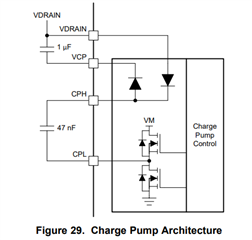Other Parts Discussed in Thread: LM5008A, DRV8353
Hi Motordriver Team,
What would be the current limit of the VCP and VGLS pin of the DRV8353RS? The datasheets states that the VGLS pin is the output of the voltage regulator. LM5008A, which is used as an integrated buck, can provide a maximum of 0.35 A . Does this mean the current limit of VGLS is 350mA? I could not find any information on the current limit of the VCP pin.
A fast response would be highly appreciated.
Thank you for your support.
Best,
Angelika




